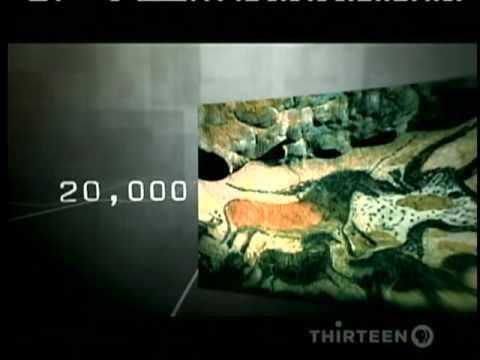REFUSE TO EXTINCT!! Coelacanth Ancient Fish That Lived One Hundred Million Years Ago
Summary
TLDRThe *Silelakan Sililakan* or *Latimeria*, a 'living fossil' fish, has survived since the Devonian era, over 400 million years ago. Thought to be extinct, it was rediscovered in 1938 and again in 1997 in Indonesia. This deep-sea fish, found in both Africa and Indonesia, features lobed fins resembling limbs, highlighting its evolutionary significance. Adapted to stable deep-sea environments, it has experienced minimal evolution due to its slow metabolism and low predator threats. The *Latimeria* is now a protected species, captivating scientists and nature enthusiasts alike with its resilience through mass extinctions and its rare survival today.
Takeaways
- 😀 The **Latimeria**, or 'living fossil', has existed for about 400 million years since the Devonian era.
- 😀 There are two living species of **Latimeria**: **Latimeria chalumnae** from Africa and **Latimeria menadoensis** from Indonesia.
- 😀 These fish have lobed fins, a key feature that connects them to the early evolutionary transition from water to land vertebrates.
- 😀 **Latimeria** was thought to have gone extinct around 66 million years ago, but was rediscovered in 1938 off the coast of South Africa.
- 😀 A second population of **Latimeria** was discovered in 1997 in North Sulawesi, Indonesia, 60 years after the initial rediscovery.
- 😀 These fish live in deep-sea environments with stable conditions, which has allowed them to remain relatively unchanged over millions of years.
- 😀 **Latimeria**'s slow metabolism and long reproductive cycles contribute to its survival and longevity in the deep sea.
- 😀 Despite their ancient lineage, **Latimeria** has undergone slight genetic and physiological changes over time.
- 😀 The large eyes and specialized oil bubbles of **Latimeria** help them navigate the dim light of their deep-sea habitat.
- 😀 The wide geographic distribution of **Latimeria** species suggests their origins in the supercontinent **Gondwana**, which linked parts of Africa and Asia.
- 😀 **Latimeria** is a protected species, and efforts are being made to conserve their habitats in regions like North Sulawesi and Manado Bay.
Q & A
What is the significance of the coelacanth fish?
-The coelacanth is considered a living fossil because it has remained relatively unchanged for around 400 million years, surviving through multiple extinction events, including the mass extinction that wiped out the dinosaurs.
Why is the coelacanth called a 'living fossil'?
-It is called a living fossil because it has not undergone significant evolutionary changes over millions of years, providing a rare glimpse into ancient fish species from the Devonian era.
How did the coelacanth survive the extinction events?
-The coelacanth survived extinction events, such as the one 66 million years ago, due to its slow metabolism, limited number of predators in the deep sea, and stable environmental conditions in its deep-sea habitat.
Where are the two existing species of coelacanth found?
-One species, Latimeria chalumnae, is found off the coast of East Africa, and the other, Latimeria menadoensis, is found around the north of Sulawesi Island in Indonesia.
What is unique about the coelacanth's fins?
-The coelacanth has lobed fins, which are fleshy and muscular. These fins resemble the limbs of vertebrates and could potentially be used for walking on land, offering evidence of the evolutionary transition from water to land animals.
Why was the coelacanth thought to be extinct for so long?
-The coelacanth was believed to be extinct for around 66 million years, as fossils were found only from the Devonian period to the late Cretaceous period, with no evidence of its existence in later periods until its rediscovery in 1938.
Who discovered the first living coelacanth in modern times?
-The first living coelacanth was discovered in 1938 by South African museum curator Marjorie Cortinei Latimer, who identified it after a fisherman brought the specimen to her.
How did the second coelacanth discovery come about?
-The second coelacanth was discovered in 1997 by biologist Markv Elman in North Sulawesi, Indonesia, when he found a coelacanth at a local fish market while conducting research on fish species in the region.
Why do the coelacanths in Africa and Indonesia have such a wide geographic separation?
-The coelacanths' wide distribution between Africa and Indonesia is believed to be due to the ancient supercontinent Gondwana, which connected these regions. Additionally, ocean currents might have helped spread the species over vast distances.
Why does the coelacanth have such minimal evolutionary changes over time?
-The coelacanth's deep-sea habitat, with stable conditions like low temperature, low salinity, and low pressure, has allowed it to maintain its ancient form. Additionally, its slow metabolism and low reproductive rates have contributed to the lack of drastic evolutionary changes.
Outlines

This section is available to paid users only. Please upgrade to access this part.
Upgrade NowMindmap

This section is available to paid users only. Please upgrade to access this part.
Upgrade NowKeywords

This section is available to paid users only. Please upgrade to access this part.
Upgrade NowHighlights

This section is available to paid users only. Please upgrade to access this part.
Upgrade NowTranscripts

This section is available to paid users only. Please upgrade to access this part.
Upgrade Now5.0 / 5 (0 votes)





